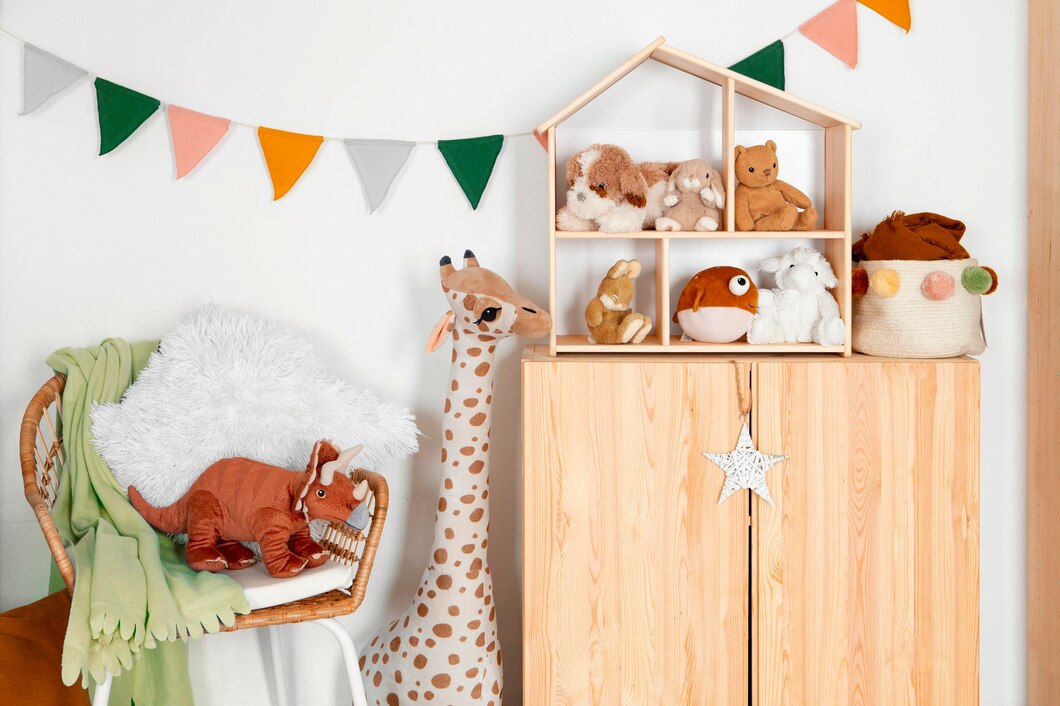Creating a Functional and Aesthetic Infant Bedroom with Montessori Principles

Designing an infant's bedroom using Montessori principles can create a nurturing and calm environment that supports early development. Montessori philosophy focuses on promoting independence, curiosity, and engagement in children, making it a great approach for crafting a space where infants can thrive. When you integrate these ideas into an infant bedroom, it transforms the room into a hub of learning and exploration.
Crafting a space that balances functionality with aesthetics is key. A well-organized environment encourages freedom of movement and fosters self-reliance, even among the youngest learners. From the colors you choose to the types of furniture you include, each element plays a role in creating an inviting, yet stimulating atmosphere. The following sections will guide you through the essential aspects of setting up an infant bedroom that aligns with Montessori principles.
Simple and Calm Decor
Imagine walking into a room where every detail invites tranquility and focus. That’s the spirit behind the Montessori principle of simplicity. In an infant's bedroom, simplicity isn’t about bare walls, but about choosing elements that soothe the senses without overwhelming them. By opting for neutral and calming colors such as whites, soft blues, or gentle greens, you create a serene backdrop that helps ease the infant's transition into new experiences. These colors not only promote a sense of calm but also stimulate a gentle kind of curiosity.
Decorative choices should also lean towards minimalism. It's important to select items that are both visually appealing and functional. This means favoring a few well-chosen decorations over a clutter of items. Choose art pieces or wall hangings that are simple yet engaging, perhaps featuring nature, animals, or geometric patterns. These should be placed at a level that's accessible to infants, offering them something comforting to gaze at during their early months.
When it comes to decor, remember to integrate natural materials where possible. Wooden elements, soft cotton fabrics, and wicker baskets not only provide functional storage solutions but also add warmth and texture to the room. Each choice contributes subtly to creating a space that feels safe and inviting, helping your little one to connect with their surroundings in a peaceful, yet stimulating way.
Child-Sized Furniture
At the heart of Montessori design is the idea that children should easily interact with their environment, and the right furniture plays a huge role in making this possible. Child-sized furniture isn’t just a style choice; it’s a practical decision that encourages autonomy and comfort. Imagine a world where even the tiniest member of the family has access to what they need—a shelf to pick their favorite toy, a small chair to sit and play in, or a table to draw on.
For a truly Montessori-inspired room, pieces like low shelves allow infants to see and choose items themselves. This setup serves as an early step towards making choices and solving problems, skills they'll build on as they grow. Additionally, small tables and chairs provide dedicated spaces for seated activities, accommodating tiny bodies in a way that adult-sized furniture never can.
The beauty of child-sized furniture is that it provides an opportunity for infants to explore and play independently. By being able to reach their toys, books, and games, children can engage with their environment more fully, all while experiencing the joy of doing things for themselves. This nurturing setup not only supports developmental milestones but also instills confidence and a sense of belonging in their personal space.
Safe and Accessible Layout
A safe and accessible layout is a cornerstone of a Montessori-inspired infant room. This setup not only ensures security but also invites exploration. Start by arranging furniture so that it's stable and within easy reach for infants. This means solid, low shelves and furniture that won't topple if pulled on. Heavy pieces should be anchored to the walls to prevent accidents.
Consider the placement of toys and books. Store them on low shelves or in open baskets so babies can access them without help. By doing this, you encourage decision-making and independence from an early age. Safety also involves softening sharp corners with protective covers and selecting age-appropriate toys that don't pose a choking hazard.
Here's a quick rundown of smart layout tips:
- Use non-slip rugs to cushion falls and provide a soft playing surface.
- Keep floor space open to allow free movement and crawling.
- Minimize the number of electrical cords and outlets within reach, ensuring any visible ones are securely covered.
Engaging and Educational Toys
Incorporating engaging and educational toys into your child's space aligns beautifully with Montessori principles. These toys should inspire curiosity and learning. Choose ones that offer sensory experiences, like textured or brightly colored blocks that engage touch and sight.
Opt for toys that reflect real-life objects, helping infants connect with the world around them. Items like wooden fruits and vegetables or simple musical instruments can enrich playtime. By rotating toys regularly, you keep the environment fresh and stimulating, preventing boredom and encouraging ongoing exploration.
Consider creating themed toy sets:
- Sensory baskets with different textures.
- Natural-themed toys, like wooden animals or leaf shapes.
- Puzzle sets that promote problem-solving skills.
Making the Space Personal
Personalizing an infant's room can significantly enhance their connection to their space. Adding family photos or personal items creates a sense of identity and belonging. Displaying pictures of family members at the child's eye level brings a comforting familiarity.
Reflecting the family's culture and traditions in the room can be a lovely way to celebrate diversity. Perhaps introduce textiles or decorations that are meaningful to your family. This personalization isn't just about decoration; it lays down roots for their personal journey and understanding of the world.
Wrap-Up and Encouragement
Crafting an infant's bedroom with Montessori principles in mind is both rewarding and empowering. By focusing on simplicity, accessibility, and personalization, you create an environment where infants can grow and learn comfortably. Each aspect, from the choice of furniture to the selection of toys, plays a role in enhancing their developing skills and curiosity.
Remember, the goal isn't to achieve perfection but to create a space that resonates with your child's growing needs and interests. Trust your instincts as you assemble their room. As they grow, you'll find joy in watching them engage with their environment in ways that foster independence and confidence. Enjoy this process, knowing each thoughtful choice contributes to their early development in meaningful ways.
Creating an inviting and development-friendly environment for your little one can start with setting up a well-thought-out infant bedroom. If you’re looking for inspiration and materials to make this space truly special and in line with Montessori principles, explore what The Topponcino Company offers. Take the next step in designing a nurturing space by visiting their site to discover practical solutions and ideas for your child's room. Visit their infant bedroom collection to begin your journey in creating the perfect setting for growth and exploration.












